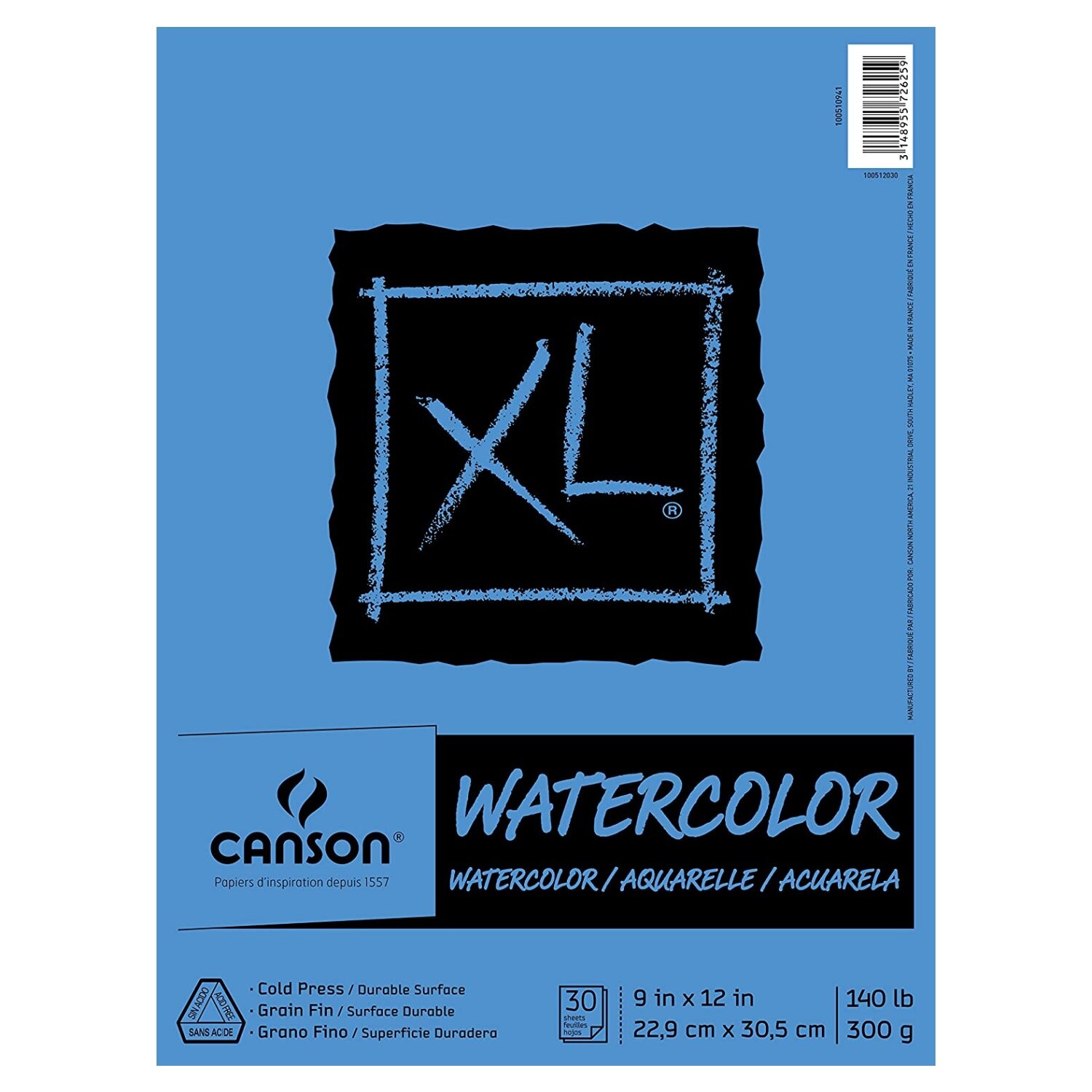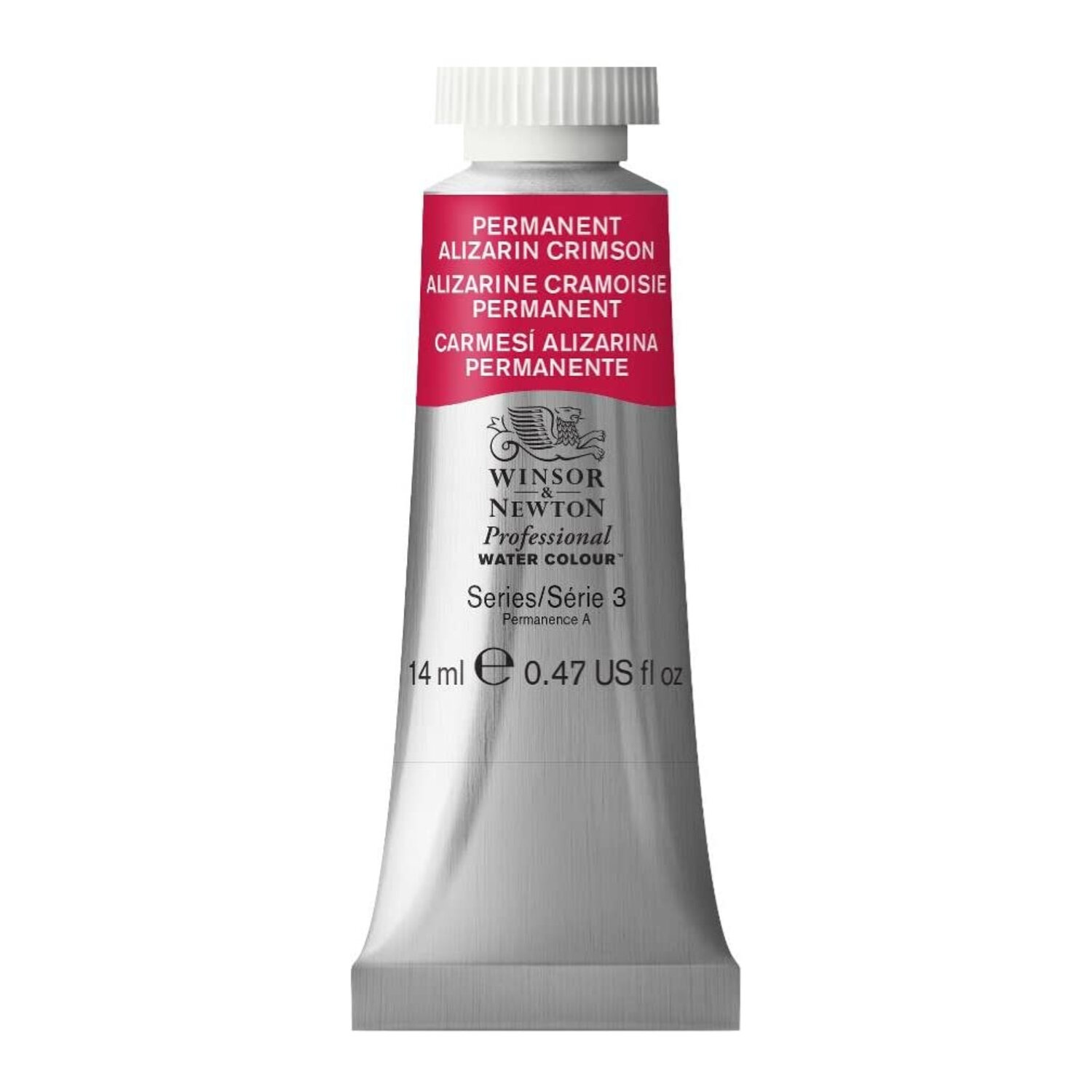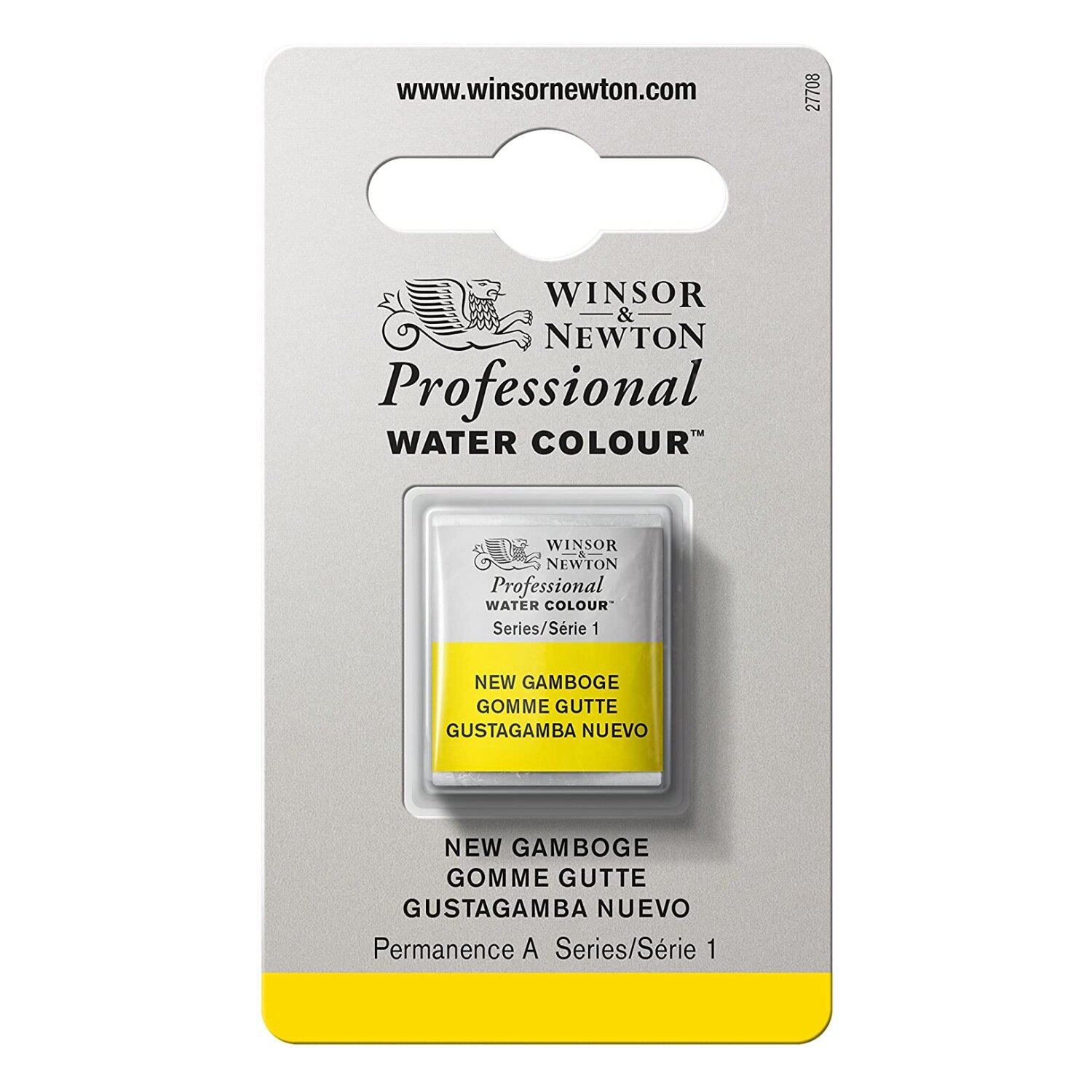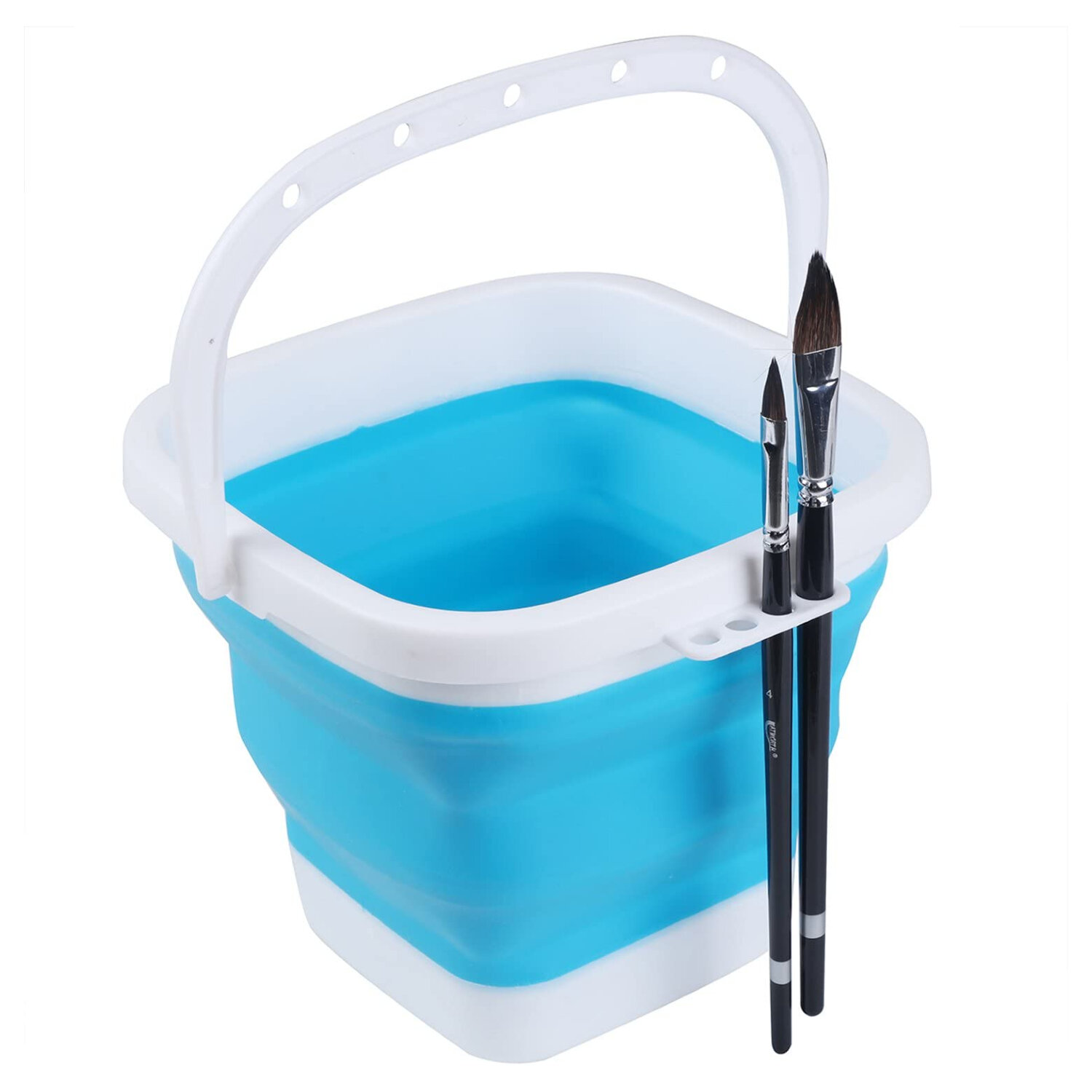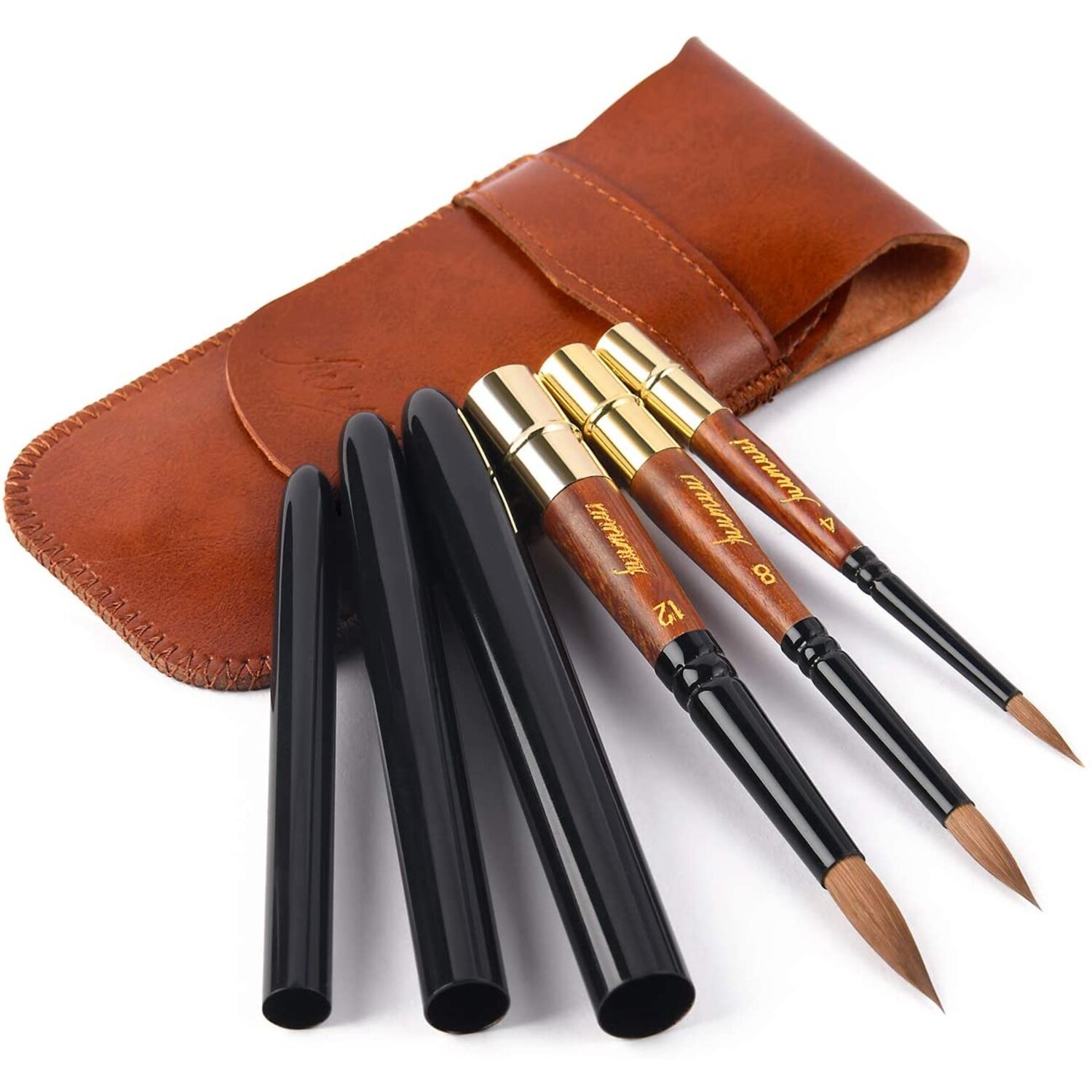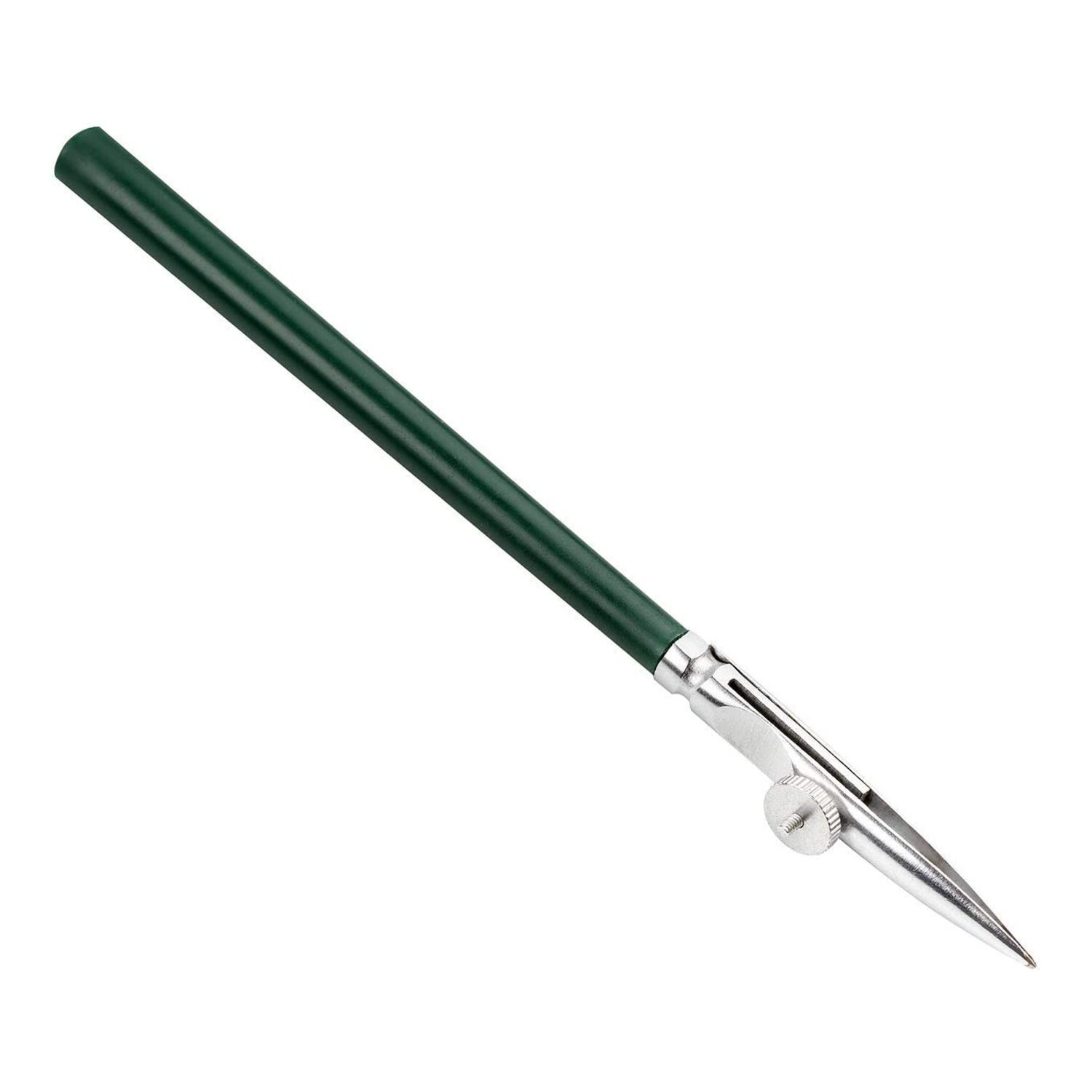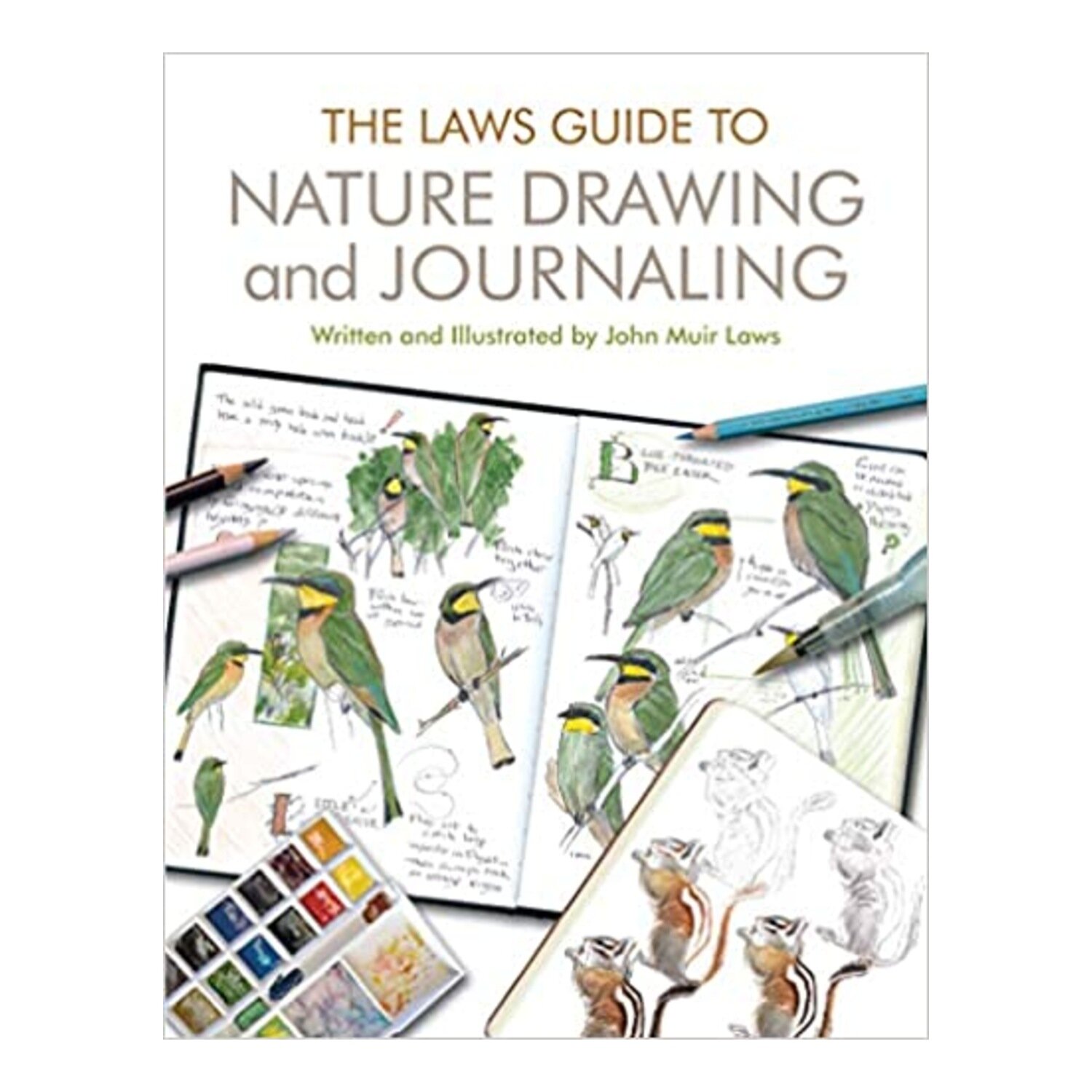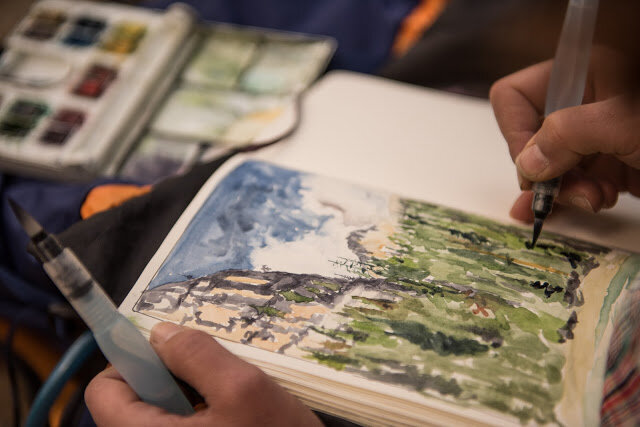
Recommend Art Supplies.
Welcome to my recommended supply list for watercolor painting. My goal is to get you painting and making art with minimal setup or materials required. There is certainly no need to go out and buy everything on this list - please use what you currently have and supplement your tool kit as you find you need it.
**Please note, this post contains affiliate marketing links to products I use or recommend. If you click through and purchase from my link, I get a little commission.
Brushes
Princeton Heritage Set.
For watercolor brushes, I have had good luck with the Princeton Heritage Series with the red handles or the Princeton Neptune Series with the brown handles. If you are just getting started and have nothing, this is a good beginner set to get going. They have good snap and keep their bristle point and this set gets you started at a great price point.
Princeton Individual Brushes.
As your skills develop and you are looking to expand your set, I'd recommend a few brushes in broad range - round size 4, 8, 12 & 16 or something equivalent. As you get more experienced you can add more and larger brushes to your quiver as needed. I like the Princeton 4050 series as well as the Neptune Series for their price point and quality.
Pentel Aquash Water Brush.
Waterbrushes are great for painting outside or on the go. These are acrylic bristle brushes with a water reservoir in the handle - no water container required. This Pentel set is perfect and includes 4 different sizes. Keep in mind that these brushes behave much different than a traditional watercolor brush, but are a great tool to have in your kit.
Watercolor Paper.
Canson XL Pad.
You can find this Canson XL watercolor paper almost anywhere in any craft store. It is not expensive and decent paper. If you find you are using lots of water and doing lots of washes, you may be frustrated by this paper, as it does buckle. But if you like small details, pen & ink, and aren't using much water, you will like it.
Arches 140 lb Pad.
This cold pressed, 140 lb Arches paper with the green cover, is a pretty standard, good watercolor paper. The more water you use, the higher weight (ie lb) you will want. The difference between hot and cold press paper is that hot press is smooth, while cold has rough surface. This is my go to paper for most things.
Canson Watercolor Block.
You can also try out these watercolor blocks by Canson. The pages are glued together on the sides, which makes it easy to paint on without having to tape your paper down. When you are finished painting, you simply peel the painting off the block. These come in a few sizes from 6x9" up to 18x24".
Palette.
Studio Palette.
This airtight studio palette by Mijello is my go to palette for most of my work. It has 18 wells for watercolors and plenty of space for mixing, plus a pull out tray for extra room. It packs nicely for travel and won’t let any wet colors spill when you are done. You fill this palette with watercolor tubes that you buy individually.
Winsor & Newton Travel Set.
Buying a travel palette that includes paints will be cheaper than buying a palette and individual tube watercolors. There are SO many options out there for travel palettes, and Winsor & Newton makes a lot of different sizes and styles that you can see through the link. This was one of my first palettes and it is great.
Field Artist Travel Set.
This Field Artist Pro palette is the one I currently use, although I have altered some of the colors. It is compact and holds a lot of half pans that can be switched out as necessary. I like this palette because it is simple and looks good, but works just as good as a Winsor & Netwon. You can always swap out colors as desired.
Watercolor Paint.
Daniel Smith Watercolor.
Daniel Smith Watercolors are a great brand. While you can use just about any brand to get started, I have always had good luck with Daniel Smith and like their colors. You can buy any color of paint you like or an introductory set like this to get you started. Watercolor paint from the tube lets you achieve more saturated washes than using dry paint from a half pan.
Winsor & Newton Watercolor.
Winsor & Newton is another brand of great paints and you can’t go wrong getting any of these. You can also get an introductory set here. Colors vary between the brands, so an Ultramarine Blue from one will look a little different than another. Some are more translucent, have more granulation, or slightly different shades of color. It’s all about experimenting.
Winsor & Newton Half Pans.
Half pans are just dried watercolor set in a small plastic container. You paint with half pans just the same as with watercolor out of a tube, but half pans are great for your travel palette and are dry on purpose. You can buy individual half pans to swap out for your travel palette or you can also refill your half pans with watercolor paint from the tube and let it dry.
Plein Air Painting.
Superlite Cup Easel.
When you want to paint “en plein air”, which means painting in open air, a sturdy easel is the way to go. Cup Easels Superlite allows you to paint standing up or sitting in a chair and has a handy palette for mixing and a built in supply for your paints, which you fill with your favorite colors. This can be used for all media, but is one of the only plein air easels built specifically for watercolor.
Manfrotto Tripod.
To use your new plein air easel out in the wild, you will also need a tripod on which to stand it. This Manfrotto Tripod is a great option - lightweight, compact, comes in a carrying case and can be easily packed away or strapped onto the side of your backpack. I recommend getting the option with the phone clamp which makes it versatile to use the tripod with your phone as well.
Collapsible Water Bucket.
A nice water bucket makes a big difference and a collapsible one makes travel and on the go painting even easier. This one by Meeden even has a few spots to store brushes when you’re not using them. And when you’re done it flattens down for easy packing.
Travel Painting.
Kolinsky Travel Brushes.
Brushes can be easily damaged while traveling, but these Kolinsky Sable brushes are compact and stored easily for travel. The lids are used to extend the brush handle and the nice range of sizes works well for on the go painting. While the Pentel waterbrushes are great for travel painting, they don’t always give you the dexterity you want as a real watercolor brush does and this is a good fit for travel and brush capability.
Faber Castell Water Cup.
There are water buckets and water cups. This collapsible water cup by Faber Castell is compact, easy to carry and even has a scalloped top to store your paintbrush on. This cup goes with me everywhere I take my watercolor supplies. Sure, you could use a coffee mug, but then you’ll confuse your beverage with your rinse water.
Arteza Travel Sketchbook.
Rather than painting in only in my sketchbook, I also carry a spiral bound watercolor book for paintings that I require better paper for. The nice thing about these Arteza Watercolor Sketchbooks is that they are perforated at the top, so the painting can easily be torn out to be made into a keepsake or given as a gift.
Sketchbooks & Journals.
Moleskine Sketchbooks.
Moleskine makes a lot of different types of sketchbooks and this Moleskine Art is a good all round sketchbook. Pros: lots of pages, good for sketching, pen and ink, and writing. Cons: watercolor dries very quickly, cannot take much water, no watercolor blooming. There is also a Moleskine sketchbook with watercolor paper, but it has less pages than this one.
Strathmore Visual Journal.
Another option is this spiral bound sketchbook by Strathmore that can lay flat and is a good overall sketchbook. The 90 lb paper is good for a variety of media, lots of pages, and can open up all the way. Strathmore also sells another spiralbound journal with higher weight paper at 140 lb, which is better for watercolor. You can also easily cut pages out to frame.
Hahnemule Watercolor Book.
Many watercolor sketchbooks come in landscape mode. This is just a personal choice and totally up to you if you want landscape or portrait mode. Hahnemule makes both a landscape and portrait mode and is suitable for a wide variety of mediums. Choosing the right sketchbook for you is completely personal and completely depends on how you want to use it.
Pens.
Micron Pens.
Ink and watercolor go really great together, but you want a permanent ink pen that won’t bleed when it gets wet. Micron pens are the most well-known of the permanent ink pens and come in a wide range of sizes from very delicate and thin like a 005 (.2mm) up to an 08 (.5mm) or the PN, which is my favorite. You can also buy a full set like this to experiment.
Faber Castell Pens.
Faber Castell also has a great set of 4 permanent ink pens in a range of sizes. There are three thin delicate pens in increasing widths similar to Micron pens and then one that is thicker and can act more like calligraphy for when you want something wider.
Tombow Pens.
I'm in love with these Tombow pens that can have a very fine point or can be very thick. They act like calligraphy pens but are totally permanent and won't run if you get them wet. Japanese pens are all so nice and really worth playing around with.
Masking Fluid.
Pebeo Masking Fluid.
Masking fluid helps you retain your whites when working on large areas, big washes, or delicate details. Simply paint the masking fluid on with a brush or a ruling pen (see right) to the areas you want to keep white, then let dry. After you are done painting, remove the masking fluid with an eraser. Many brands have masking fluid, but I would recommend using Pebeo. Pebeo also makes a masking marker that comes in a couple different size widths - 4 mm & 7 mm.
Ruling Pen.
The best way to apply masking fluid is with a ruling pen. You simply dip the pen in the masking fluid, adjust the tightness of the pen tines with the dial and then draw the masking fluid into the areas you want to protect. The tightness of the tines determines how “fine” your masking fluid line will be. Allow the masking fluid to dry and then paint over. When finished, use the masking glue eraser to remove.
Masking Glue Eraser.
The easiest way to get rid of masking fluid is to use a pickup eraser, also known as a rubber cement or residue eraser. You can certainly just use your own fingers to rub the masking fluid off, but these erasers make the job much easier and get the little tiny bits to pull up too.
Watercolor Tutorial Art Books.
The Complete Watercolorist’s Essential Notebook.
Gordan MacKenzie’s books are all great and provide wonderful explanations for how to use watercolor. His follow-along tutorials have taught me so much about how to use this medium. The Complete Watercolorist’s Essential Notebook is a great all around book about watercolor.
The Laws Guide To Nature Drawing and Journaling.
John Muir Laws has a great way of breaking down animals and nature to learn how to draw and paint them. His Guide to Nature Drawing and Journaling is very inspiring to get outside, observe nature and record it. He also has a lot of good tips and tricks for painting on the go.
Urban Watercolor Sketching by Felix Scheinberger.
Felix Scheinberger provides a fun and inspiring take on travel watercolors. His book Urban Watercolor Sketching shows how to work with pen and ink and combine it with watercolor. His style is very loose and playful, and provides a great counterpoint to more realistic styles.




